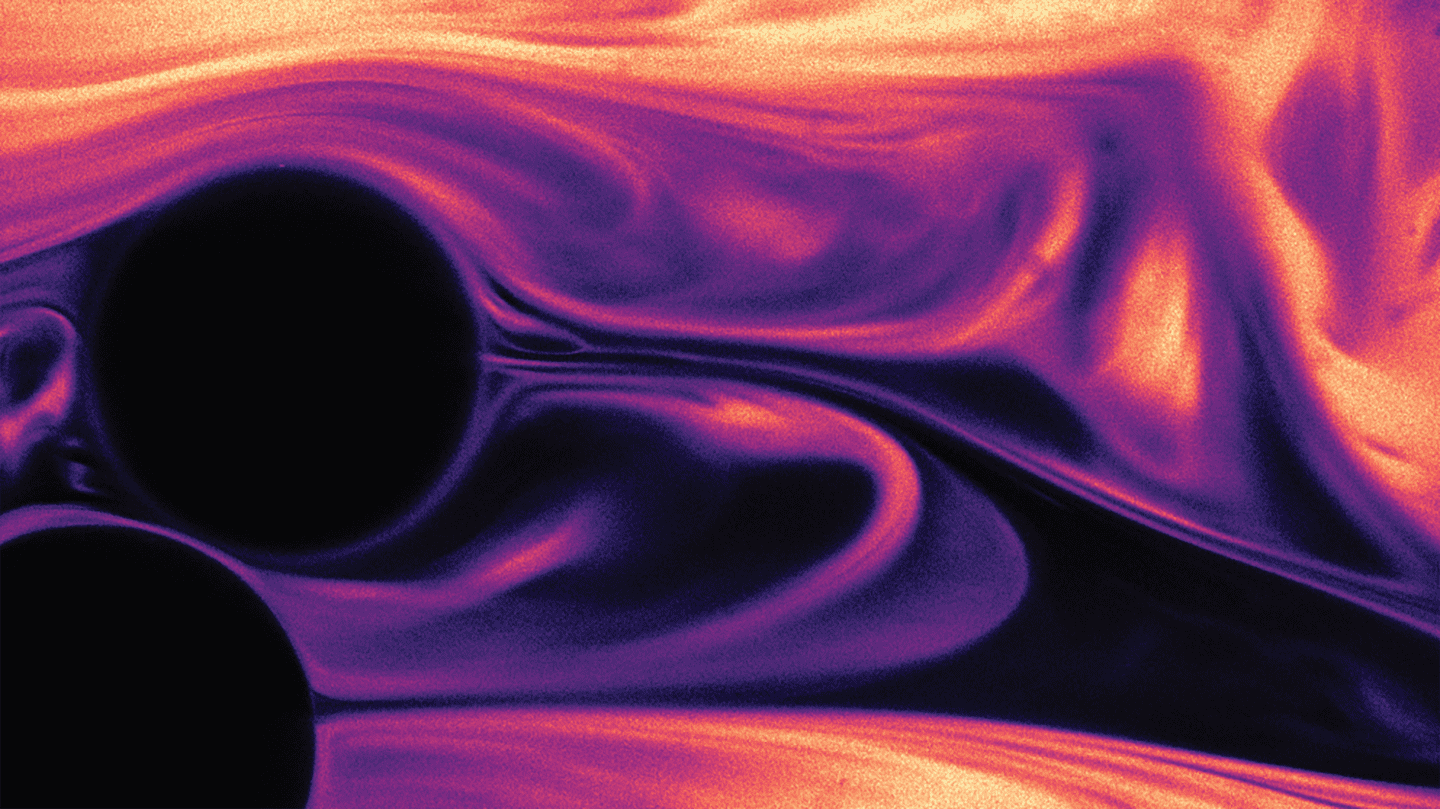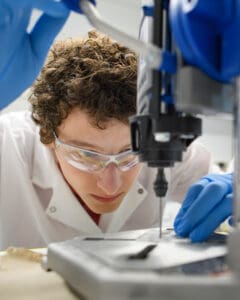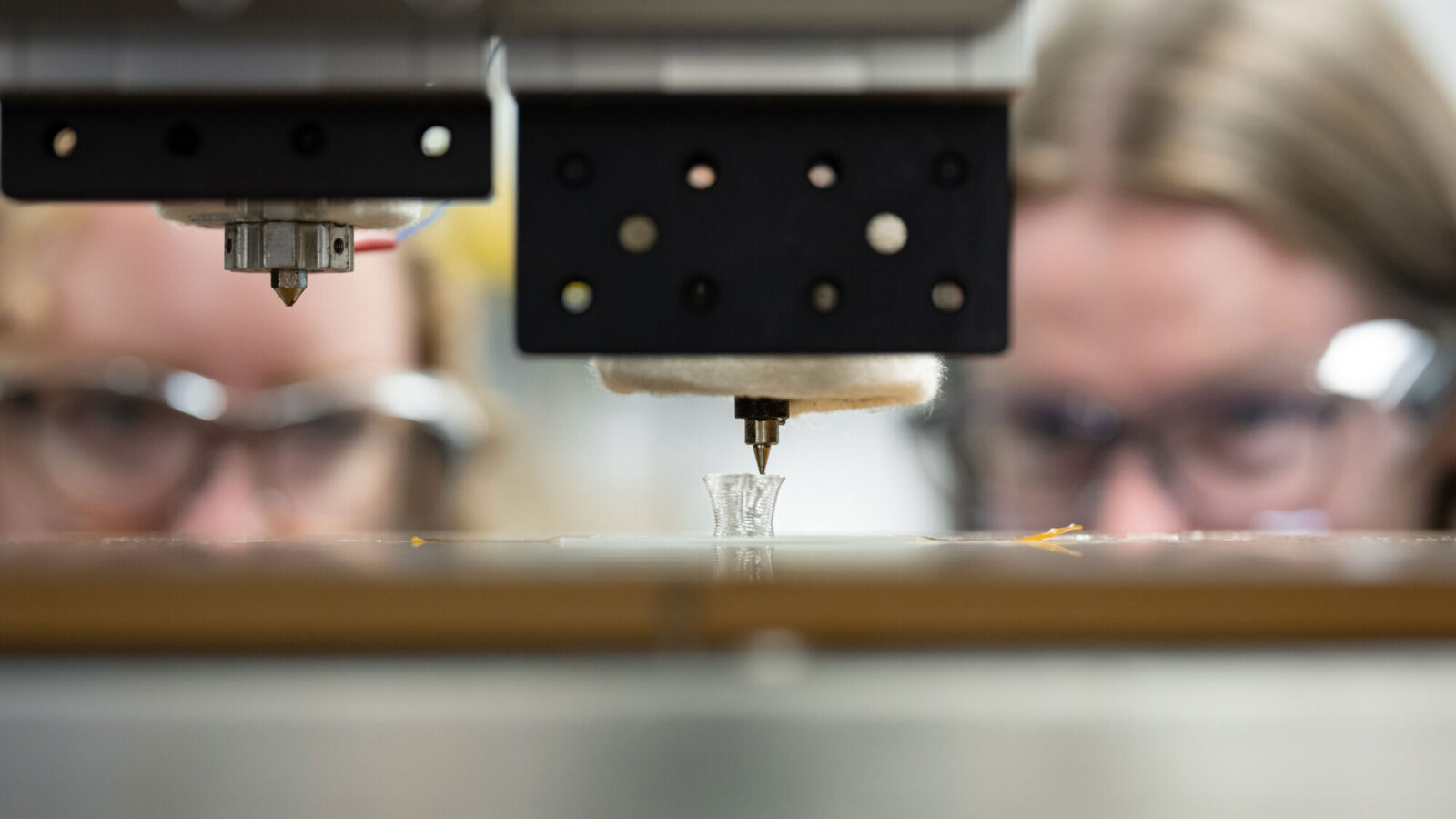
Better mixing leads to faster reactions for key chemicals
By
on
It turns out there’s a lot to that mixing. For one thing, industries rely on robust mixing processes to make all kinds of material goods—virtually everything one might touch from the seat of an office chair, for example.
But lots of industrial processes that include mixing also include forcing fluids through a bed of packed grains, less like stirring a cup of coffee and more like brewing espresso. Plastics and chemical manufacturing rely on this approach, as do some forms of carbon capture and environmental remediation. The trouble is, mixing of the kind found in coffee mugs needs a relatively large volume where turbulence can chaotically stretch one fluid apart and allow it to combine with the other. The geometry of the grains in a packed bed, like the tamped grounds in an espresso machine, maximizes surface contact to drive important chemical reactions, but the tiny spaces between the grains, called pores, don’t offer enough volume for turbulence, making mixing fluids much more difficult.

Now Princeton Engineering researchers have found a way to mimic turbulent mixing in porous environments by loading one of the liquids with springy polymers that stretch and recoil at microscopic scales. That spring action, tuned right, turns each pore into a mug-like volume where rapid mixing can occur, according to the researchers. Mixing is a key factor in determining the rates of the chemical reactions that produce many important products. Ultimately, the researchers said, the new technique speeds reaction rates by as much as a factor of 10.
The study, published July 9 in the Proceedings of the National Academy of Sciences, was led by Christopher Browne, a graduate alumnus of Princeton’s Department of Chemical and Biological Engineering, and advised by Sujit Datta, associate professor of chemical and biological engineering. Browne had started investigating these systems in his first year of graduate study, but creating the conditions to study mixing led him through a long series of related problems to solve — what the polymers do to the liquids as they move from pore to pore and how to tune these complex fluids to behave in a controlled, predictable manner.
That research produced a prolific body of work, with several papers published in major journals. Browne had only just started to turn back to the broader question of mixing when it was time to complete his Ph.D. He said that while it was hard to put the questions aside, he figured others in Datta’s lab would pick up the various threads and sort out how it all fit together. Then, as chance would have it, several months later, he got an opportunity to return for a six-month postdoc position, during which time he completed this capstone study.
“I was very lucky to have the chance to move back,” Browne said. He said at the time he finished his Ph.D., he and Datta had “no idea” how they were going to get from a series of loose threads and interesting data to proving that this technique could enhance reaction rates. “And I think that little bit of time not thinking about it gave us a moment to step away and come back with fresh eyes and figure out how to visualize the chemical reactions.”

The polymers Browne and Datta used in this study are common, chemically related to the absorbent materials used in diapers. And they say that there is a wide range of materials that could be used to similar ends, tuning each polymer and fluid to suit a given need.
Datta said that while scientists and engineers have, for decades, tried to solve this problem by changing the geometry of the grains in packed beds, that approach is expensive to scale and, in many cases such as in groundwater aquifers, simply not possible. The new technique, relying as it does on common polymers to create chaotic mixing, is not only materially simple and mathematically elegant but robust across a wide range of porous environments.
“[It’s] beautiful from a purely aesthetic perspective,” he said. “But beyond being just a cool phenomenon that makes for nice fluid mechanics studies and teaches a lot about fluid mechanics, I truly believe that we can use this to solve legit engineering problems, such as making the production of important chemicals more efficient.
“It’s a completely different approach that is potentially much more scalable, much more feasible,” Datta said.
“Harnessing elastic instabilities for enhanced mixing and reaction kinetics in porous media” was published in the Proceedings of the National Academy of Sciences on July 9, 2024. The research was supported by the National Science Foundation, through Princeton University’s Materials Research Science and Engineering Center, and by the Camille Dreyfus Teacher-Scholar Program.







